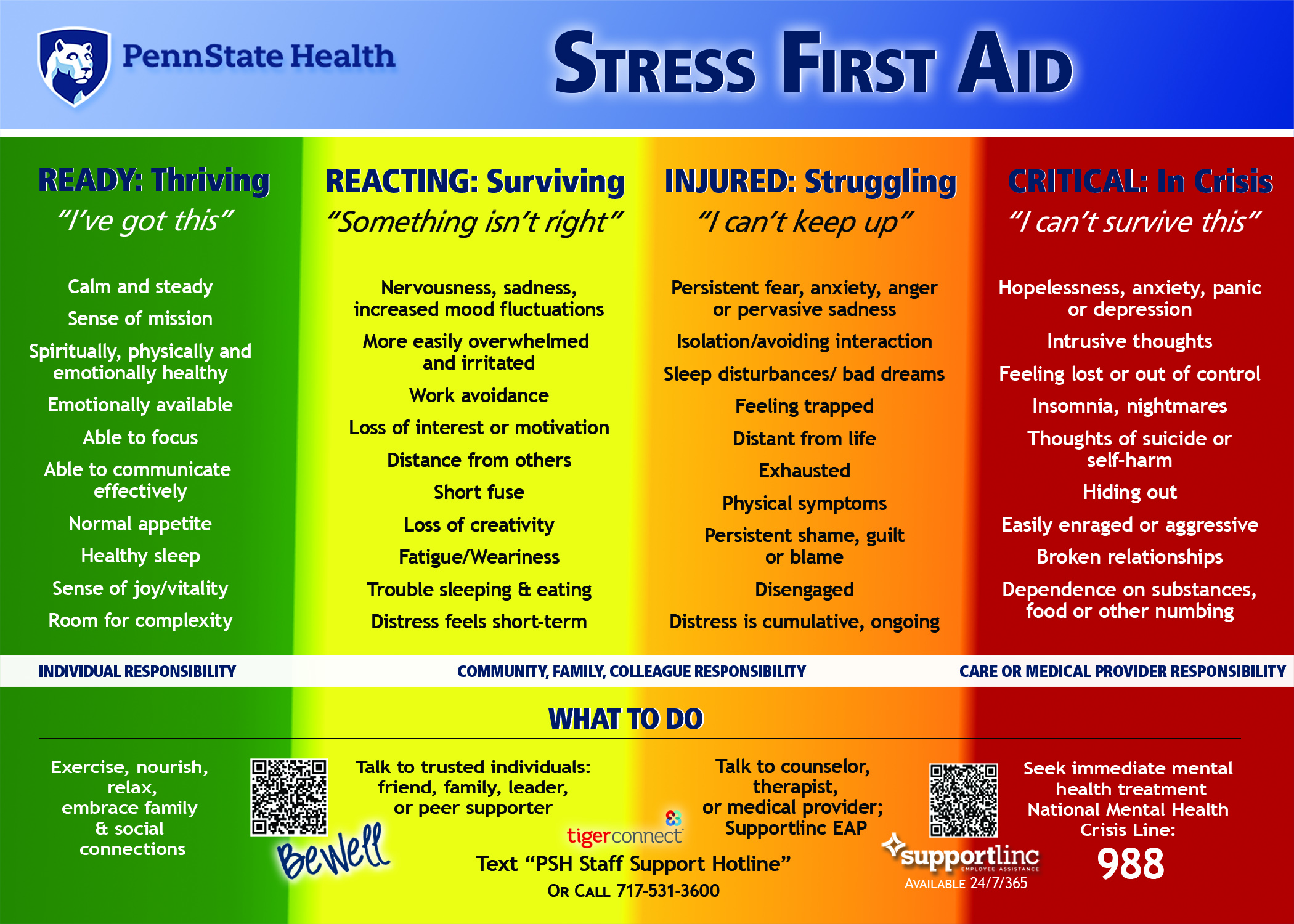Stress First Aid
Stress First Aid (SFA) is a model of self-care and peer support that identifies and addresses early signs of stress reactions in individuals, co-workers and teams so that affected individuals or teams are directed early and quickly to the best available resources of support.
The core of SFA is the spectrum of severity that helps individuals and teams identify the impact of stress and distressing events. With SFA, each team member is invited to “check you” and “check two” as a way of supporting and assisting those struggling in high pressure environments so that the proper support resources can be engaged.

Important Resources
Text or call “PSH Staff Support Hotline”: (717) 531-3600
Vist SupportLinc EAP
National Mental Health Crisis Line: 988
When should I use the Stress First Aid tool?
- Self-care
- Team huddles
- One-to-one meetings
- Staff meetings
- Team distress
- After challenging events
How should I use the Stress First Aid tool?
- Review card and determine your color
- After identifying your color, review “what to do” and utilize resources.
About Stress First Aid
- Stress First Aid is an evidence-informed self-care and peer support model.
- It was developed by the military and adapted for other high-risk occupations. It is based on factors that promote recovery from adversity and stress.
- Healthcare is a high-risk profession for stress injury due to high exposure to: trauma, loss, inner conflict and fatigue.
- Our goal is to use it as an intuitive, common language for how to know who is really “okay” and who needs more support and recovery from the immediate and residual stress responses from their work and to foster a culture of true well-being and collective care.
- Additional information: Here is a link to the website.
